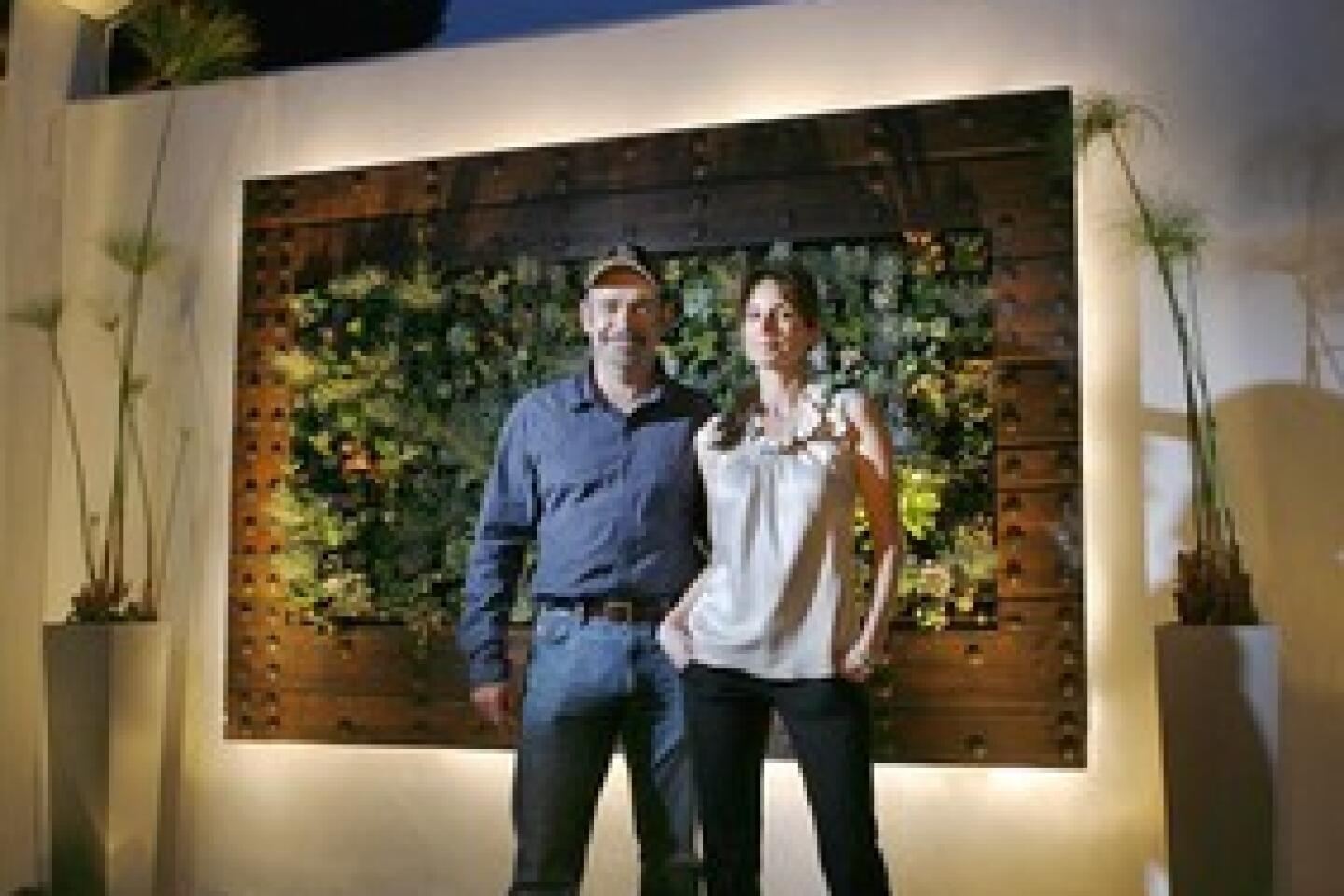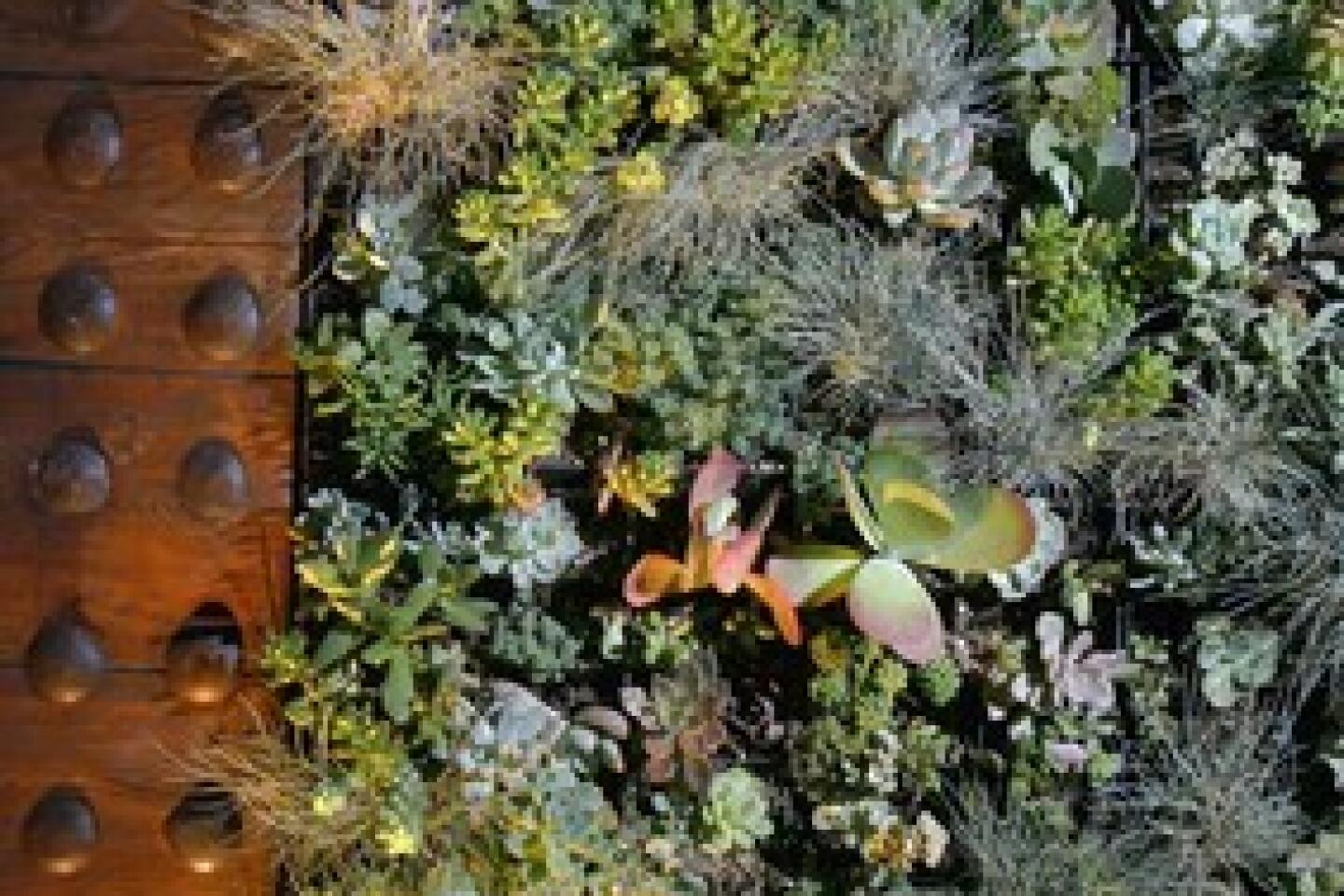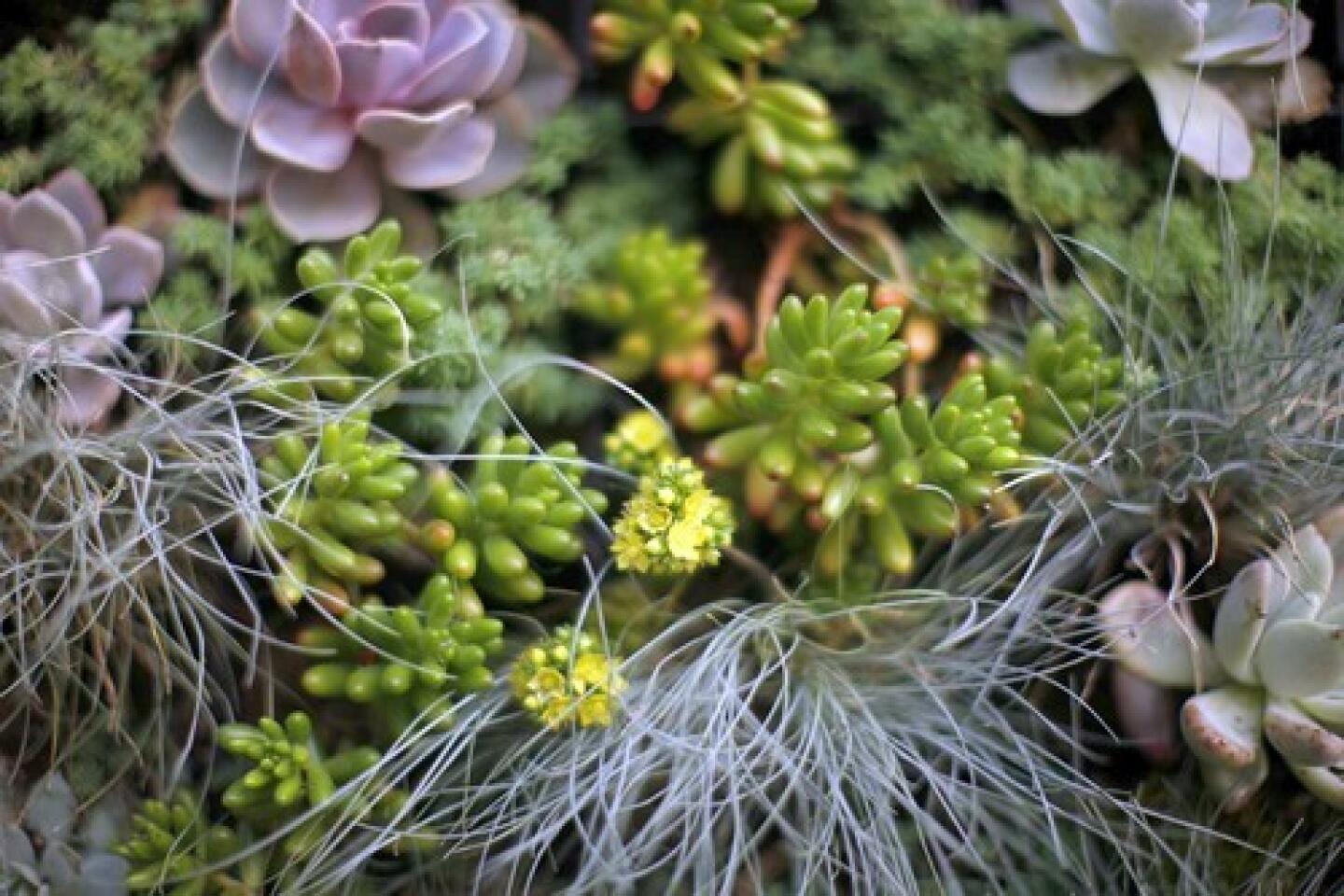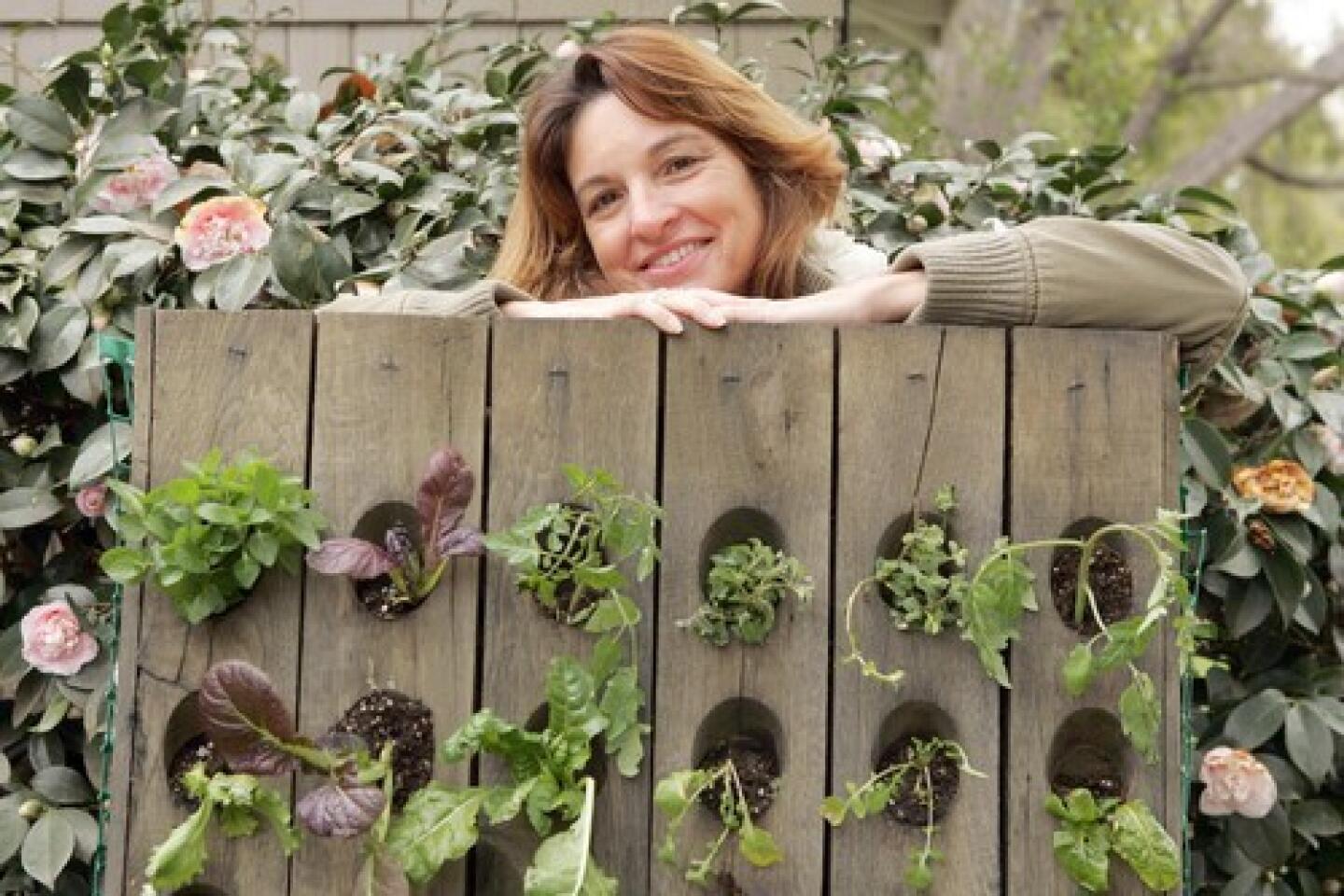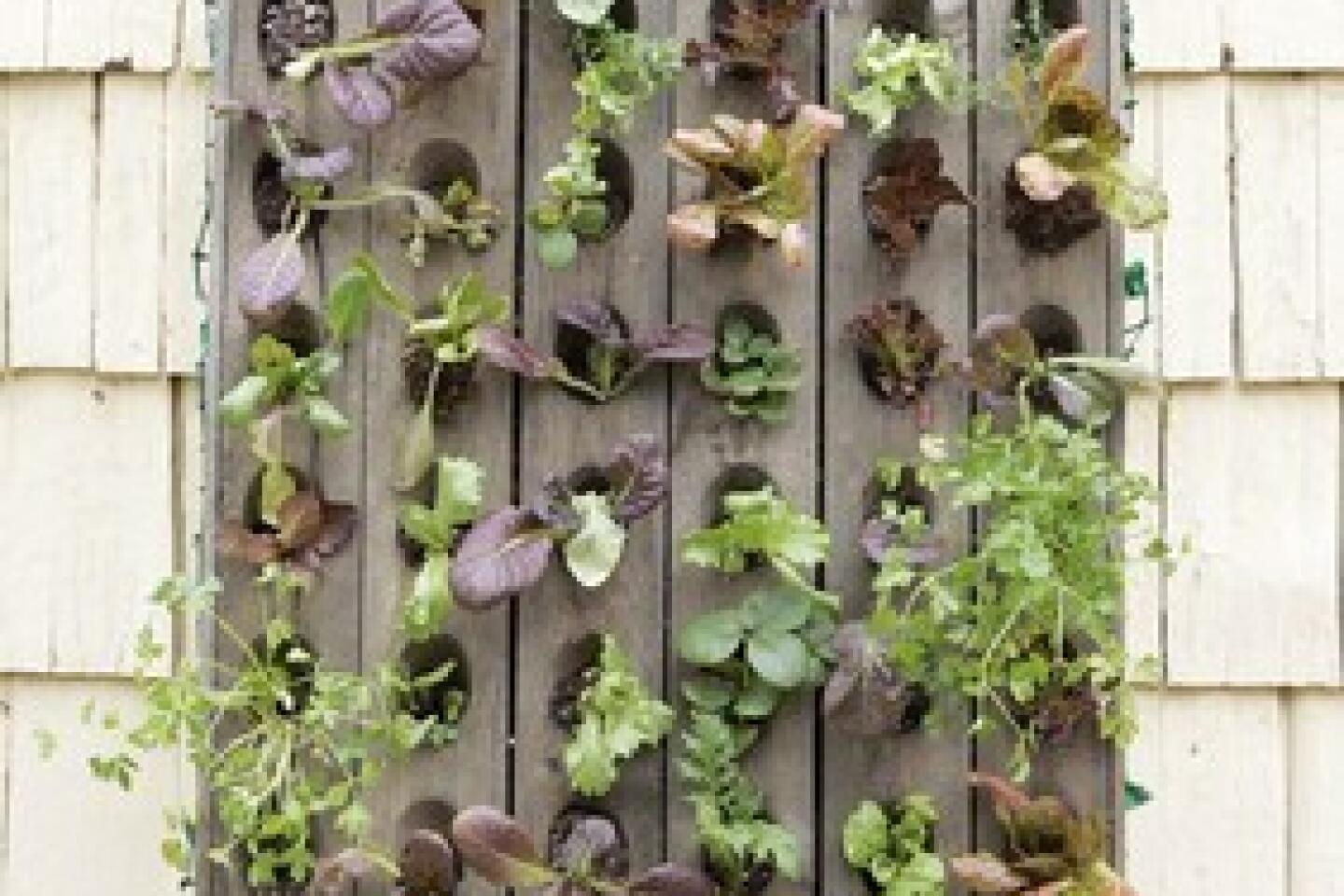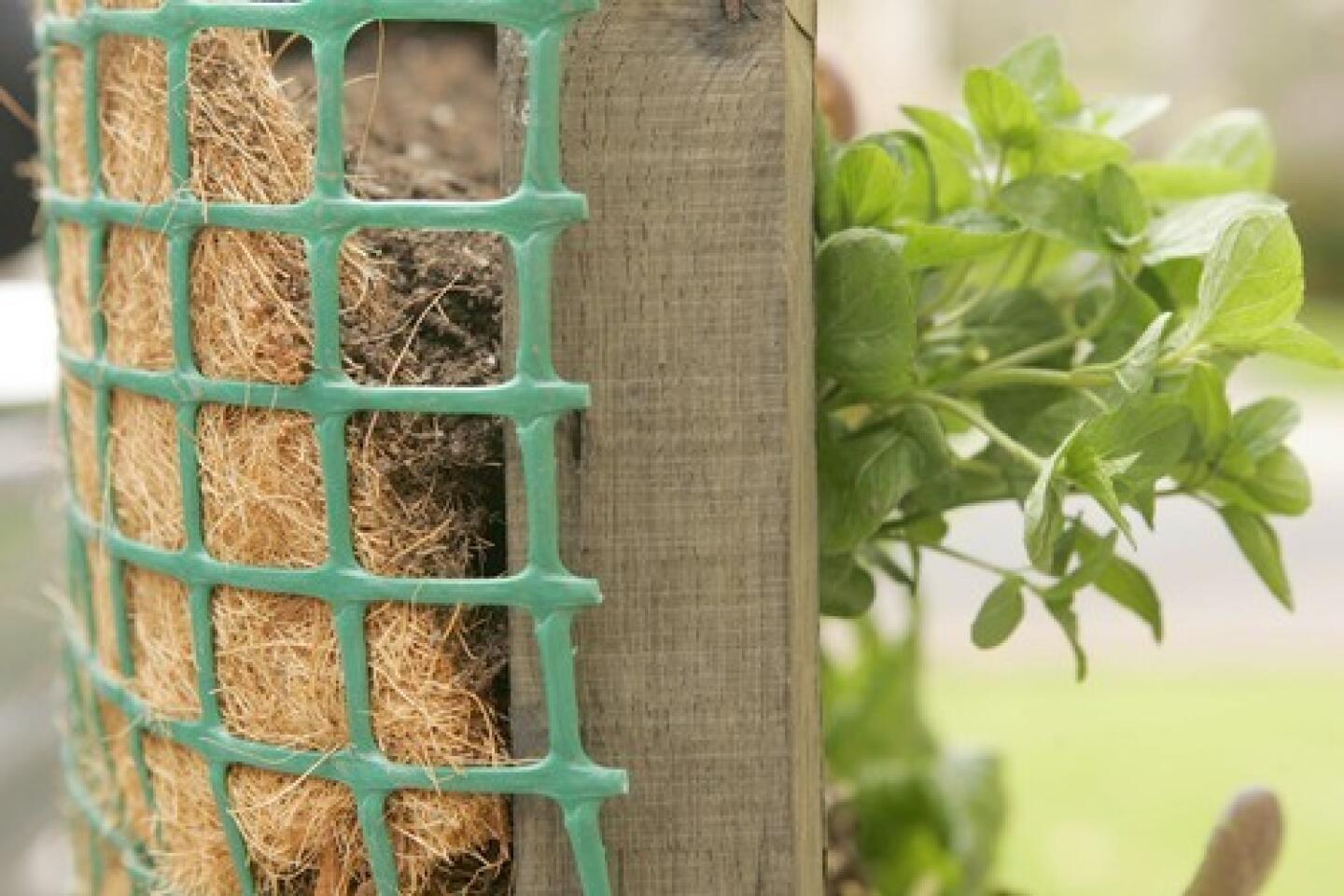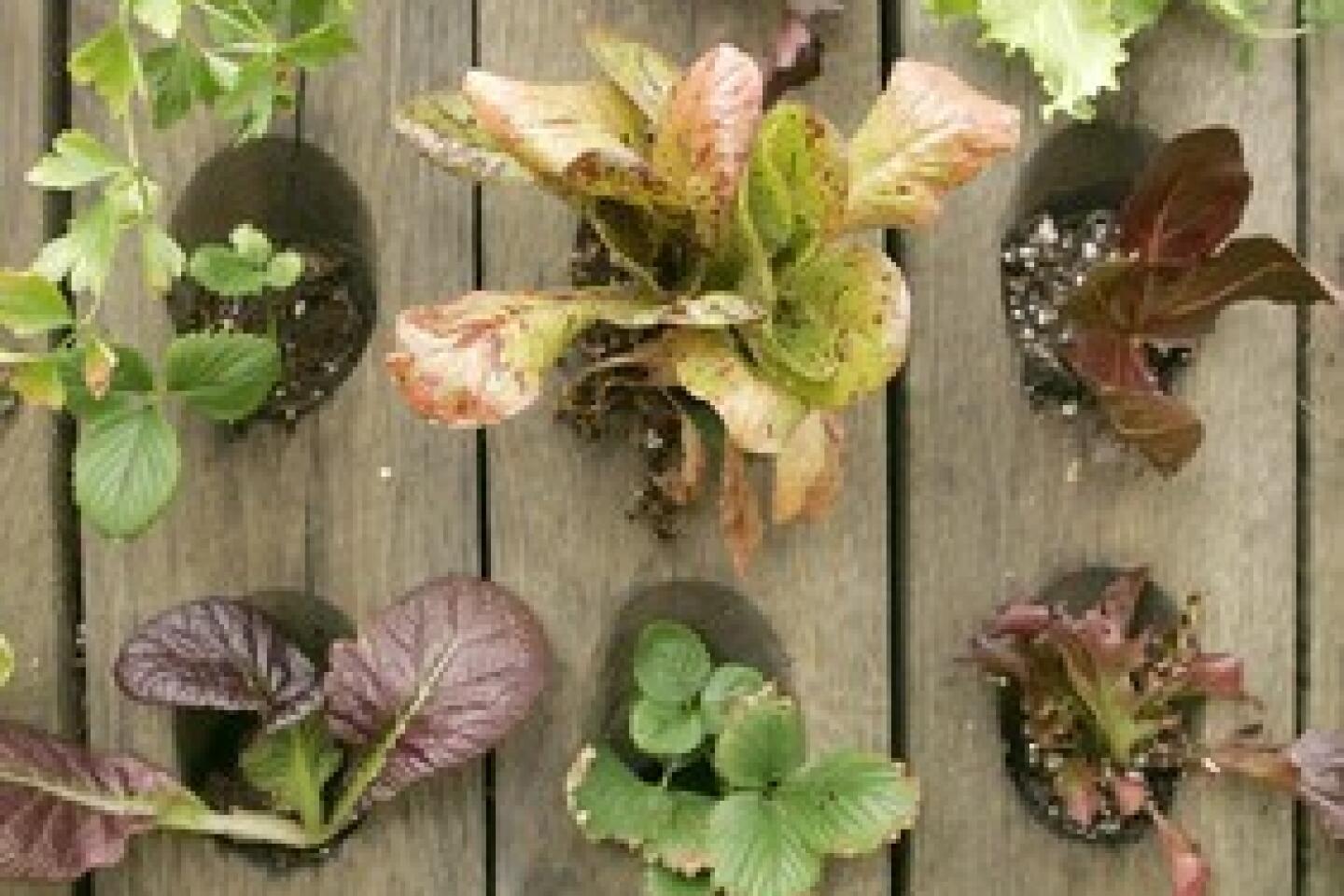Antique door pulls double-duty as plant pot, art
- Share via
When Joella Thomas spotted a 200-year-old Spanish door studded with iron nailheads while vacationing on the Mediterranean isle of Ibiza, she wasn’t thinking about its dimensions. “I just knew I loved it,” she said.
Weeks later, when the walnut door arrived at her Beachwood Canyon home, however, Thomas realized just how enormous it was -- about 8 feet tall and 4 1/2 feet wide. “I knew it was too big,” she said.
Not one to give up, Thomas separated the piece -- actually, a door within a door -- into two parts. She installed the smaller inset door as the entrance to her Spanish-style home. For the larger door, now shaped like a giant picture frame, she looked to L.A. artist Michel Horvat. He turned the door on its side and made it the focal point for Thomas’ outdoor room, a living wall with hundreds of succulents and California native plants.
“I knew instantly it would make a terrific centerpiece for the courtyard,” said Horvat, whose sustainable designs include light- ing made from recycled materials ( www.metropolights.com). “It was just a matter of making it work.”
He started by treating the walnut frame with Penofin wood finish to make it more durable. Antique wood is perfect for such a project, Horvat said, because it’s hard and “has a natural protection to it.” The edges were then lined with copper flashing to further protect the wood.
An irrigation line installed at the top of the door drizzles water down to the plants below. LEDs placed behind the frame give it a three-dimensional look -- “like it is levitating,” Horvat said.
When it came time to add the plants, Thomas, Horvat and contractor John Harwood worked on the ground, placing more than 300 1-inch plants -- $1 each from Home Depot -- inside modular baskets. This mix-and-match process of balancing blues and greens and assorted textures proved to be the most difficult part of the project. “We played with it for quite a while,” Thomas said.
The completed piece weathered recent rains just fine, and the wall is a low-maintenance living artwork that will require watering just once a week.
“If the plants get too large, you can tear them out or break them off and replant them elsewhere,” Horvat said.
Thomas is pleased with the result, which Horvat figures will require an hour of upkeep every month. As the hundreds of plants meld together to form one uniform artwork, Thomas loves watching it grow. “It changes every day,” she said smiling, reaching out to break off a dangling sedum.
More to Read
Sign up for The Wild
We’ll help you find the best places to hike, bike and run, as well as the perfect silent spots for meditation and yoga.
You may occasionally receive promotional content from the Los Angeles Times.
